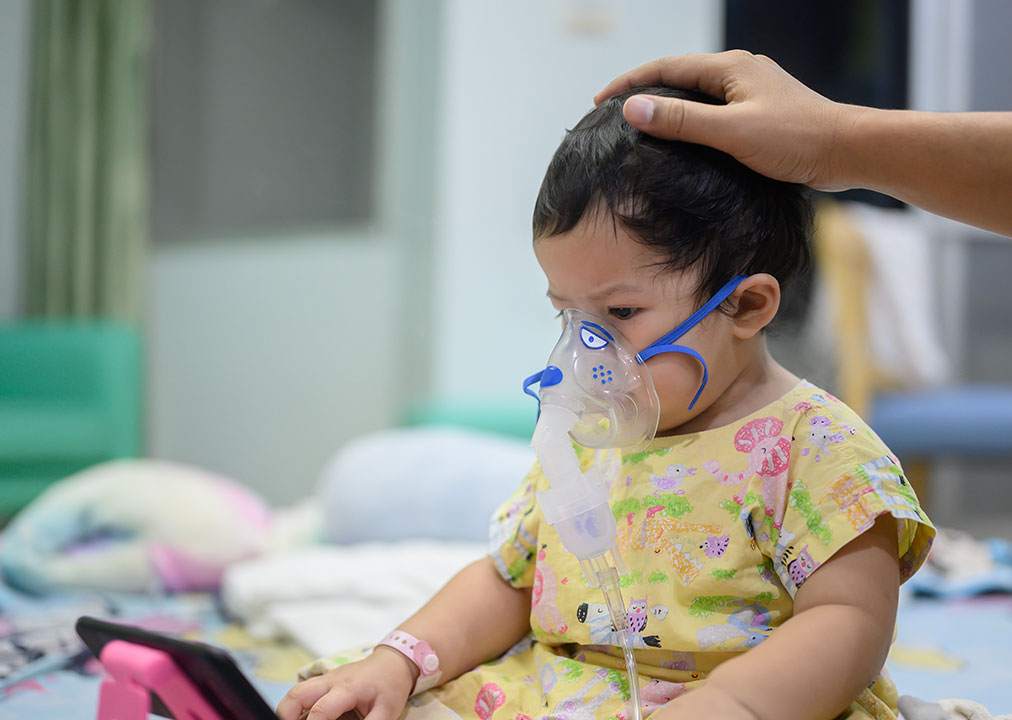710k Illinoisans avoid work advancement to keep welfare benefits – Illinois Policy
.jpg?#)
Report on Social Welfare System Inefficiencies and Their Impact on Sustainable Development Goals in Illinois
Executive Summary
Current social welfare programs in Illinois and across the United States are structurally flawed, creating a “benefit cliff” that penalizes recipients for increasing their earnings. This dynamic actively undermines progress toward key Sustainable Development Goals (SDGs), notably SDG 1 (No Poverty), SDG 8 (Decent Work and Economic Growth), and SDG 10 (Reduced Inequalities). Research indicates that an estimated 710,000 residents in Illinois have deliberately suppressed their economic advancement to retain essential benefits. This report analyzes the systemic issue, its impact on vulnerable populations, and proposes policy reforms aligned with the 2030 Agenda for Sustainable Development.
Analysis of the “Benefit Cliff” Phenomenon
A Structural Barrier to SDG 1 (No Poverty)
Social welfare programs, intended to serve as a temporary support system, frequently function as a poverty trap. The “benefit cliff” occurs when a marginal increase in earnings triggers a disproportionately large and sudden loss of benefits, leaving individuals and families in a worse financial position. This directly contravenes the objective of SDG 1 (No Poverty) by creating disincentives for escaping poverty through employment.
- A study by the Center for Social Development at Washington University in St. Louis found that nearly one-quarter of all welfare recipients have taken actions to limit their financial growth, such as declining raises or working fewer hours.
- With 3.2 million Illinoisans at or below 200% of the federal poverty level, this translates to approximately 710,000 people actively hindered from achieving economic self-sufficiency.
Undermining SDG 8 (Decent Work and Economic Growth)
The benefit cliff system fundamentally conflicts with SDG 8, which promotes sustained, inclusive, and sustainable economic growth, full and productive employment, and decent work for all. By penalizing upward mobility, the system discourages individuals from pursuing better job opportunities, promotions, and higher wages.
- Research from the University of Chicago illustrates that for a family in Illinois, a modest annual wage increase from $54,000 to $55,000 can result in the loss of over $25,000 in child care benefits.
- This punitive structure forces a choice between career advancement and essential support for health (SDG 3) and nutrition, thereby stifling both individual and collective economic growth.
Exacerbating Disparities and Contradicting SDG 10 (Reduced Inequalities)
The negative impacts of benefit cliffs are not distributed evenly, disproportionately affecting the most vulnerable populations and worsening existing disparities, in direct opposition to SDG 10. Individuals in households with persons with disabilities are reported to be more likely to avoid economic advancement due to the precariousness of their benefits. In Illinois, where half of the disabled population between ages 18 and 64 is not in the workforce, this systemic barrier further entrenches inequality.
Comparative Analysis: National Perspectives
Lessons from Utah
Evidence from Utah, a state recognized for high social mobility, demonstrates that benefit cliffs are a pervasive national problem. A report from the Sutherland Institute on safety net participants in Utah revealed significant challenges to economic advancement:
- 43% of participants had intentionally limited their income to avoid losing benefits.
- 62% reported feeling trapped in low-income jobs due to the fear of financial losses from increased earnings.
- 26% had lost benefits after earning more, subsequently leaving the workforce to reenroll in assistance programs.
These findings from a leading state underscore the urgent need for systemic reform in Illinois and nationwide to ensure welfare systems support, rather than obstruct, the path to financial independence.
Recommendations for Policy Reform Aligned with the SDGs
Strengthening Institutions for Sustainable Development (SDG 16)
To transform welfare from a poverty trap into a launchpad for prosperity, policy reform must proceed at all levels of governance. Creating effective, accountable, and inclusive institutions, as called for in SDG 16, is paramount. The following actions are recommended:
- Federal Government: Implement a gradual tapering of benefits. This ensures that workers always experience a net financial gain from increased earnings, aligning welfare policy with SDG 1 and SDG 8.
- State of Illinois: Exercise state-level authority to smooth benefit cliffs in programs such as Temporary Assistance for Needy Families (TANF), creating a more stable transition to economic independence.
- Local Governments: Develop and implement pilot programs to test gradual benefit transition models. These initiatives, contributing to SDG 11 (Sustainable Cities and Communities), can innovate solutions such as enhanced financial literacy to help residents navigate and overcome benefit cliffs.
1. SDGs Addressed in the Article
- SDG 1: No Poverty – The article’s central theme is how welfare program structures, specifically “benefit cliffs,” trap individuals and families in poverty by penalizing them for increasing their income.
- SDG 3: Good Health and Well-being – The loss of health care benefits is repeatedly cited as a major consequence of earning a slightly higher income, directly impacting the well-being of families.
- SDG 8: Decent Work and Economic Growth – The article details how the current system creates disincentives for work, causing people to turn down promotions, work fewer hours, or decline jobs, which hinders both personal economic growth and full, productive employment.
- SDG 10: Reduced Inequalities – The text highlights that the negative effects of benefit cliffs disproportionately affect vulnerable groups, such as households with persons with disabilities, thereby exacerbating inequality.
2. Specific Targets Identified
SDG 1: No Poverty
-
Target 1.2: By 2030, reduce at least by half the proportion of men, women and children of all ages living in poverty in all its dimensions according to national definitions.
- The article directly addresses this by discussing the “3.2 million Illinoisans living at or below 200% of the federal poverty level.” It argues that the current welfare system actively prevents people from climbing out of poverty, thus failing to reduce this proportion.
-
Target 1.3: Implement nationally appropriate social protection systems and measures for all, including floors, and by 2030 achieve substantial coverage of the poor and the vulnerable.
- The article critiques the existing “social welfare programs” as being poorly structured and acting as a “poverty trap” rather than a “launchpad.” It calls for reforms to these systems, such as tapering benefits gradually, which is a direct recommendation for improving social protection measures.
SDG 3: Good Health and Well-being
-
Target 3.8: Achieve universal health coverage, including financial risk protection, access to quality essential health-care services…
- The article highlights a failure in financial risk protection. The “benefit cliff” dynamic means a small pay raise can lead to a significant loss of benefits, with health care being a primary example. The text notes one mother lost “$600 in health benefits after earning just $20 more per paycheck,” and another feared losing “federal food and health care benefits,” demonstrating how the system jeopardizes access to essential health services.
SDG 8: Decent Work and Economic Growth
-
Target 8.5: By 2030, achieve full and productive employment and decent work for all women and men, including for young people and persons with disabilities, and equal pay for work of equal value.
- The article shows how the system works against this target. It states that an estimated “710,000 Illinoisans have intentionally hurt their own economic advancement” by “turning down raises or promotions, working fewer hours, declining job offers.” It also specifies that “half of disabled people age 18 to 64 are not in the workforce,” linking the system’s flaws to the employment of persons with disabilities.
SDG 10: Reduced Inequalities
-
Target 10.2: By 2030, empower and promote the social, economic and political inclusion of all, irrespective of… disability… or other status.
- The article provides evidence that the system hinders economic inclusion, particularly for vulnerable groups. It explicitly states that “Individuals in households with people with disabilities were more likely to avoid economic advancement,” which is a direct barrier to their social and economic empowerment.
-
Target 10.4: Adopt policies, especially fiscal, wage and social protection policies, and progressively achieve greater equality.
- The article’s conclusion is a direct call to action for this target. It recommends that “The federal government should taper benefits gradually” and “Illinois should smooth cliffs in programs,” which are specific proposals to reform social protection policies to achieve more equitable outcomes and promote upward mobility.
3. Indicators Mentioned or Implied
SDG 1: No Poverty
- Proportion of population living below a nationally defined poverty line: The article provides the statistic that “3.2 million Illinoisans living at or below 200% of the federal poverty level.”
- Proportion of population taking negative actions to retain welfare benefits: The article indicates that “nearly 1-in-4 welfare recipients” nationally and an “estimated 710,000 Illinoisans” have intentionally harmed their finances to keep benefits.
SDG 3: Good Health and Well-being
- Value of health benefits lost due to marginal income increases: The article provides a specific anecdotal indicator: “One single mother lost $600 in health benefits after earning just $20 more per paycheck.”
SDG 8: Decent Work and Economic Growth
- Proportion of persons with disabilities not in the workforce: The article states, “In Illinois, half of disabled people age 18 to 64 are not in the workforce.”
- Proportion of benefit recipients feeling stuck in low-income jobs: The Utah survey cited provides a clear indicator: “62% reported feeling stuck in low-income jobs because they feared the financial loss from increased earnings would outweigh the gain.”
SDG 10: Reduced Inequalities
- Differential impact of benefit cliffs on persons with disabilities: The article implies a comparative indicator by stating, “Individuals in households with people with disabilities were more likely to avoid economic advancement,” suggesting a need to measure this disparity.
- Financial loss from marginal wage increases: An indicator of policy-driven inequality is provided: “a modest $1,000 annual wage increase, from $54,000 to $55,000, would result in an Illinois family losing over $25,000 in child care benefits.”
4. Summary Table of Findings
| SDGs | Targets | Indicators |
|---|---|---|
| SDG 1: No Poverty | 1.2: Reduce poverty in all its dimensions.
1.3: Implement nationally appropriate social protection systems. |
– 3.2 million Illinoisans living at or below 200% of the federal poverty level. – An estimated 710,000 Illinoisans have intentionally hurt their finances to keep welfare benefits. |
| SDG 3: Good Health and Well-being | 3.8: Achieve universal health coverage, including financial risk protection. | – Loss of health care benefits due to small income increases (e.g., losing $600 in benefits for a $20 raise). |
| SDG 8: Decent Work and Economic Growth | 8.5: Achieve full and productive employment and decent work for all, including persons with disabilities. | – People turning down raises, promotions, or working fewer hours. – Half of disabled people (age 18-64) in Illinois are not in the workforce. |
| SDG 10: Reduced Inequalities | 10.2: Empower and promote the social, economic inclusion of all, including persons with disabilities.
10.4: Adopt policies, especially social protection policies, to achieve greater equality. |
– Households with people with disabilities are more likely to avoid economic advancement. – A family can lose over $25,000 in benefits for a $1,000 wage increase. |
Source: illinoispolicy.org

What is Your Reaction?
 Like
0
Like
0
 Dislike
0
Dislike
0
 Love
0
Love
0
 Funny
0
Funny
0
 Angry
0
Angry
0
 Sad
0
Sad
0
 Wow
0
Wow
0












































































